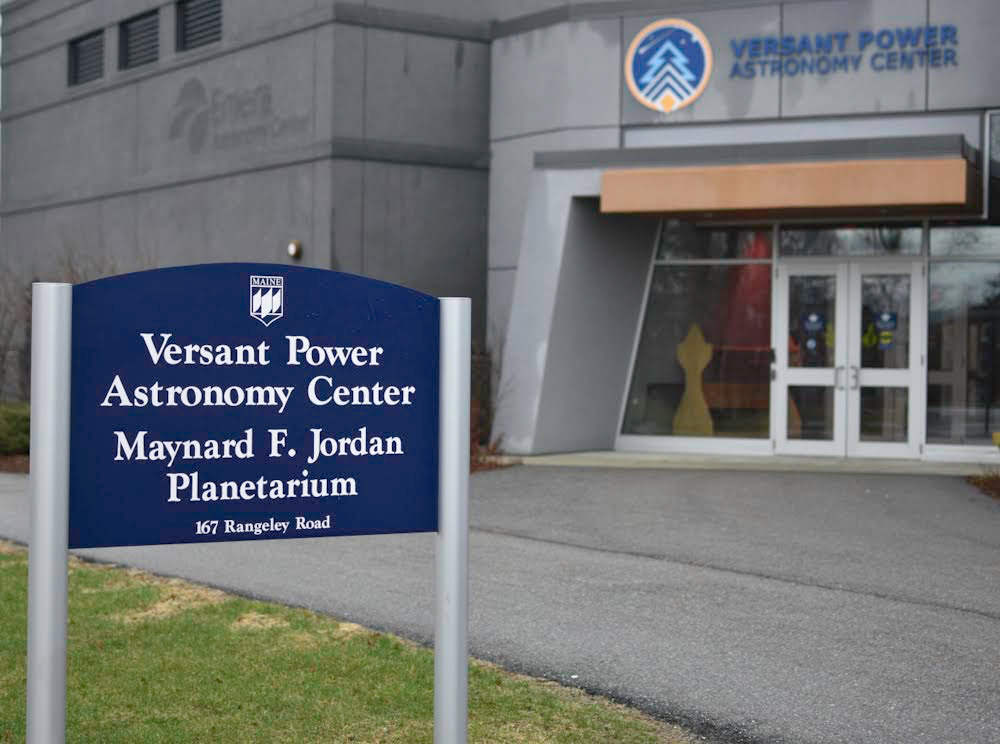In the University of Maine’s Versant Power Astronomy Center and Jordan Planetarium’s new show “Worlds of Ice,” it details how ice is formed in outer space, the history and importance of ice on earth, and the future of human’s relationship with it. All of the planetarium’s main shows run on Fridays at 7 p.m.
The show, running for about an hour, is split into three sections: the pre-show, the main show and an after-show that looks at the current night sky.
The pre-show contained a video from NASA talking about how climate change is affecting ice
and how much ice is lost each year. There was also a segment about UMaine and its partnership with the Juneau Icefield Research Program.
Founded in 1946, this program takes students and faculty across the Juneau icefield in Alaska. During the summer, students from UMaine are able to go to the icefield and aid in research on it.
Also mentioned was the proposed satellite to be sent into orbit around Jupiter’s moon, Europa.
The smallest of the four moons found by Galileo, Europa is believed to have the highest likelihood of habitability of objects in our solar system. The satellite is said to launch in October of 2024. It will complete 30 flybys of the moon, with the closest being 16 feet from the surface.
During the main show, the narration tells of a member of the Inuit people and their interest in ice.
It goes through general history, Earth’s ice ages, the importance of ice to life on earth, and ice in other parts of the solar system.
The movie gives the illusion of being encased in ice, as the sound and image of a person ice skating goes by. These continue throughout the show. One section has footage of floating between towering icebergs, with the water lapping around. The audience then plunges underwater to see the impact that melted glaciers have on sea life in the area, with computer-generated sea life swimming around and above the audience’s view. Another part in the movie displays the illusion of the screen crystallizing, forming massive snowflakes.
While the visuals are incredible to see, those who get motion sick may need to stay home. Zooming motions are often made within the movie, sending the audience hurtling through space. The visuals can be dizzying.
After the movie, the planetarium host takes back over and gives the audience a view of the current state of the night sky, as well as pointing out what constellations are visible. This section occurs after every show and is more humorous and interactive than the movie. Members of the audience chuckled as the host pointed out canis minor or, as he calls it, “the laziest constellation.”. Apart from being a glimpse at what can be seen by anyone, this section also featured some overview of the myths around the visible constellations as they were pointed out.
“I’m really just interested in space in general. How out of world it is is incredible,” Madeline Hayden, a repeat visitor of the planetarium shows, said.
Hayden came with her mother, Mariah Hayden. The pair are from Orono.
“This is our fourth or fifth show,” Mariah Hayden said.
“This one was a lot more earth-centric but still interesting,” Madeleine Hayden said.
The planetarium shows change monthly, allowing for a number of topics to be covered.
“We saw one about dark matter. That was just incredible,” Madeleine Hayden said.
While the “World of Ice” show came to a close this weekend, the February show will be “Forward to the Moon.” This show will look at our own moon, with focus on the Artemis program.
If you want less science, the planetarium also has music shows, also rotating monthly. These shows feature specific bands and combine their music with a light show in the planetarium. The upcoming show is “Foo Fighters in February” and will run every Wednesday at 4 p.m..
Prices for the show are $7 for adults, $6 for students, seniors and veterans, and $5 for children under 12. Music shows are slightly more expensive, being $9 for general admission. Tickets can be purchased at the door by calling the planetarium or off their website.
To those interested in the night sky, the show also mentioned that a comet will be visible in the coming week. Called 2022 E3(ZTF), the comet will be brightest on Feb. 1 and can be found near the little dipper.










